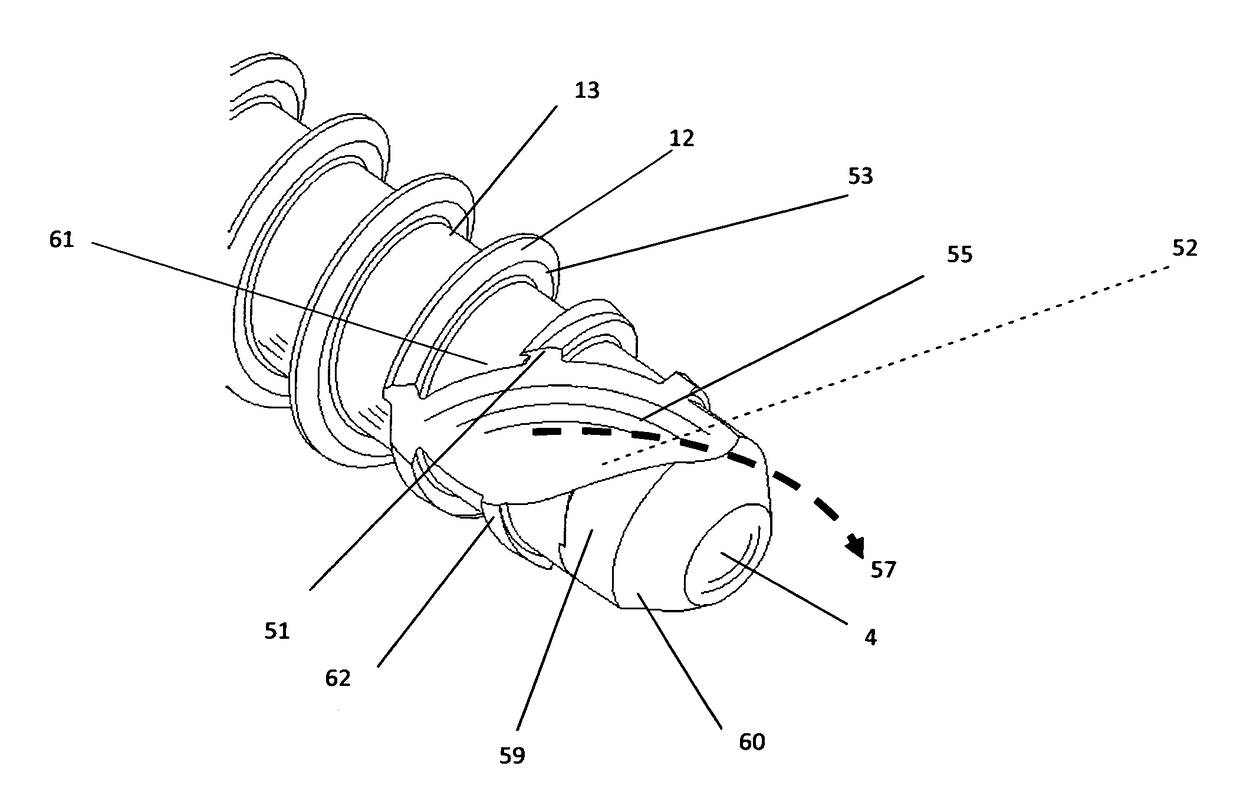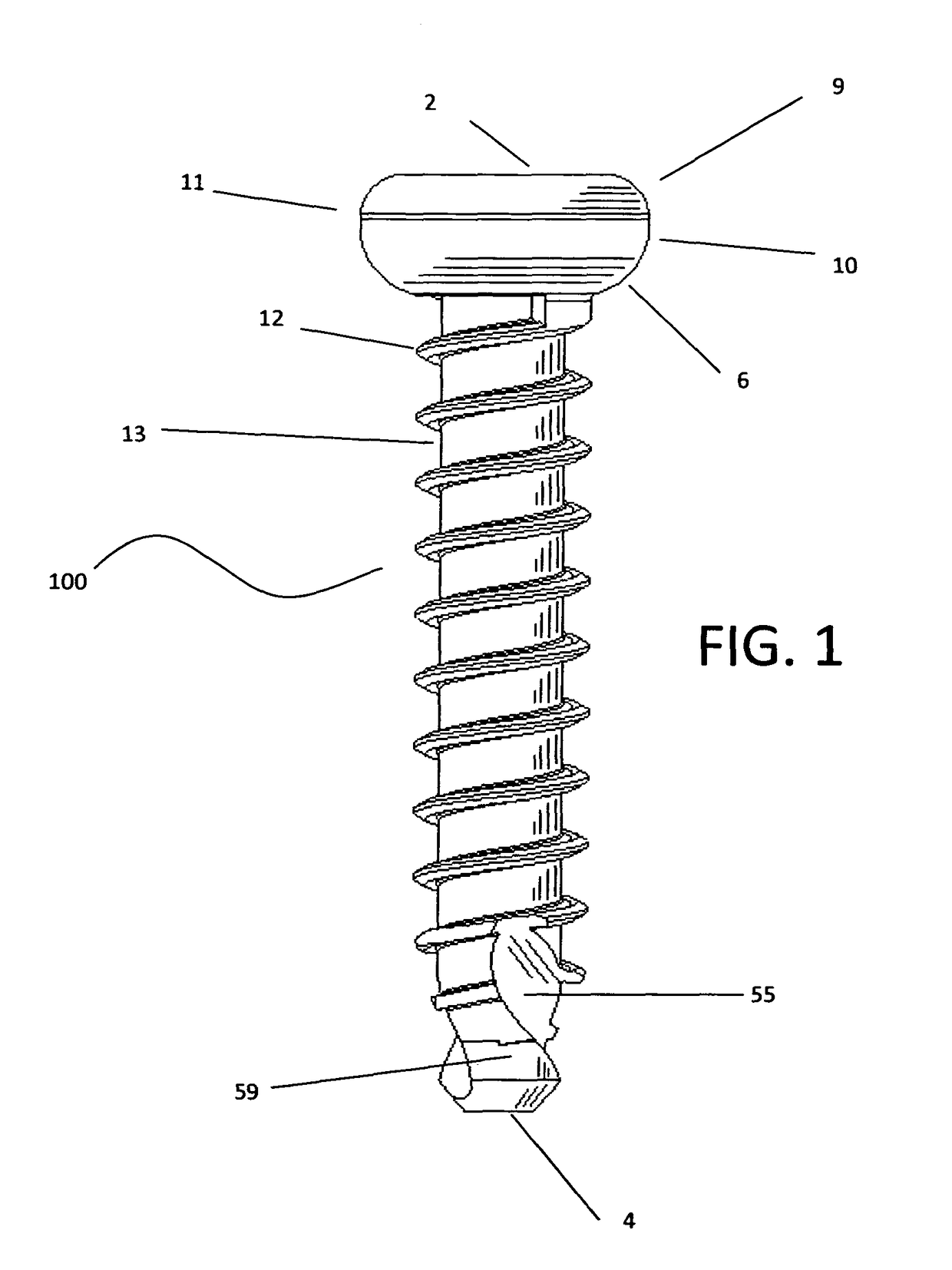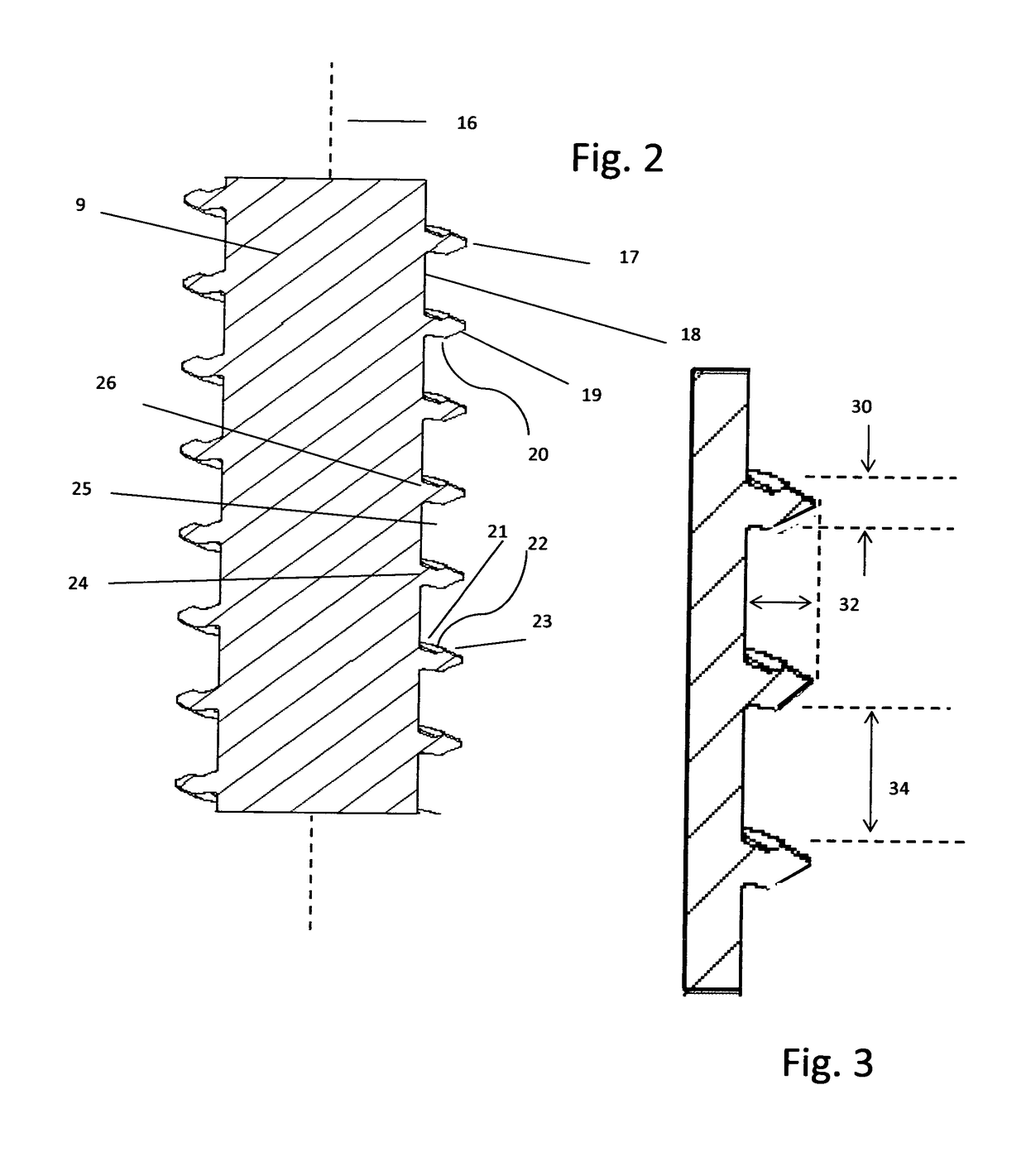Orthopedic fastener device
a technology of orthopedic fasteners and proximal ends, which is applied in the direction of fasteners, internal osteosynthesis, osteosynthesis devices, etc., can solve the problems of inability to accurately orient the fastener, difficulty in registering the fastener at the distal end with another instrumentality, and several common frailties of surgical procedures involving fasteners on skeletal structures. , to achieve the effect of minimal damage to bone and greater retention of bone structur
- Summary
- Abstract
- Description
- Claims
- Application Information
AI Technical Summary
Benefits of technology
Problems solved by technology
Method used
Image
Examples
Embodiment Construction
[0050]Considering the drawings, wherein like reference numerals denote like parts throughout the various drawing figures, reference numeral 100 is directed to the orthopedic stabilization fastener according to the present invention.
[0051]The features of the screw threads in FIG. 1 include: the head 2 (defining a proximal end) of the screw is comprised of radii 9 and 10 converging at apex 11 to form the outside diameter of the head 2. The head 2 may include a lower wall 6 which defines an abutment surface so that, when the fastener 100 is fully installed, the abutment surface 6 bears against a supporting surface (e.g. patient's body or plate) and induces the compressive load 5 shown in FIG. 11. As load 5 in induced, centering points 36FIG. 11 of screw teeth 24 are loaded against the bottom centering points 37 of bone teeth 25 which prevents radial inward or outward forces 3 from axis 16 of the screw. Likewise, load vector 1FIG. 11 induces screw centering point 38 against bone centeri...
PUM
 Login to View More
Login to View More Abstract
Description
Claims
Application Information
 Login to View More
Login to View More - R&D
- Intellectual Property
- Life Sciences
- Materials
- Tech Scout
- Unparalleled Data Quality
- Higher Quality Content
- 60% Fewer Hallucinations
Browse by: Latest US Patents, China's latest patents, Technical Efficacy Thesaurus, Application Domain, Technology Topic, Popular Technical Reports.
© 2025 PatSnap. All rights reserved.Legal|Privacy policy|Modern Slavery Act Transparency Statement|Sitemap|About US| Contact US: help@patsnap.com



